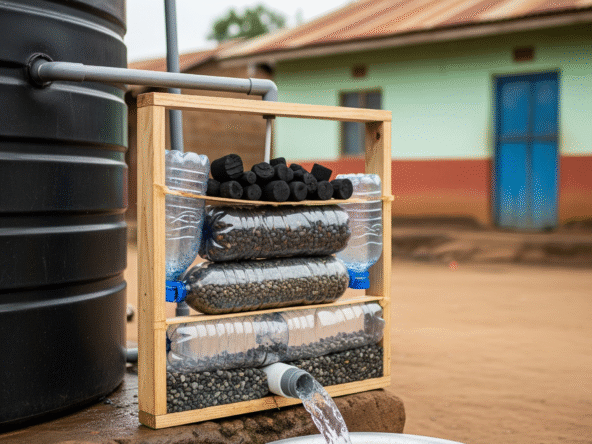Tired of switching on your water pump manually or dealing with surprise overflows? Whether you have a 500 litre tank, a 10000 litre tank, or multiple poly tanks in your compound, an automatic tank refill system can transform your water management routine.
This guide explains how these systems work, what you need to install one in Kenya, and where they’re most useful especially in rental developments, rural homes, or peri-urban plots like Rongai, Ruai, and Mlolongo where water is often rationed.
Why Install an Automatic Tank Filling System?
An automated setup ensures:
- Constant water availability
- Prevention of tank overflow or pump dry runs
- Reduced energy and pump maintenance costs
- Easier water handling during supply interruptions
It’s a must-have in areas with unpredictable county water or borehole-fed systems especially if you’re running multiple tanks or serving several units.
For tank comparison, see Top Water Tank Brands in Kenya.
How Automatic Refill Systems Work
There are two major types of systems in Kenya:
A. Float Valve (Gravity-Fed Systems)
Ideal when water flows into a lower tank from a raised source (e.g., roof tank or community supply). As the float drops, the valve opens automatically to let water in.
B. Pump-Controlled Float Switch
Best for systems that pump water from a ground-level tank to an elevated tank. When the float detects a drop in water level, it triggers a water pump electric or petrol to refill the upper tank.
This system is often paired with a steel tank or 5000 litre poly tank.
For sustainable water input, integrate this with Rainwater Harvesting in Kenya.
Components You’ll Need for a DIY Setup
| Component | Function |
|---|---|
| Float switch or sensor | Detects water level in tank |
| Relay/control box | Sends signal to pump or valve |
| Electric/petrol pump | Moves water to elevated tanks |
| Manual override switch | Allows manual control if needed |
| Overflow pipe | Prevents spillage |
| Non-return valve | Avoids backflow to the source |
Need a solid base for your tanks? See DIY Tank Stand Construction for guidance on elevated platforms.
Where These Systems Work Best
i. Borehole Systems on Rural Plots
Connect a submersible pump to a 10000 litre tank. Use a float switch to refill only when needed—saving fuel and electricity.
ii. Urban Multi-Unit Rentals
Install centralized underground tanks and pump water to elevated poly tanks in each unit automatically. Combine this with overflow safety measures and timers.
iii. Garden or Lawn Irrigation
Pair a 2000 litre water tank with a low-power pump and sensor/timer for hands-free garden watering.
For creative compound planning ideas, see Mixing Timber and Stone in Compound Design.
Tips for Safe Operation and Maintenance
- Test float switches every month
- Clean tanks every 4–6 months to keep sensors functional
- Use voltage surge protectors on the relay/pump system
- Ensure overflow drains into a soak pit—see Soak Pit Design for Residential Plots
Sample Budget for Setup
| Item | Estimated Cost (KES) |
|---|---|
| Float valve (mechanical) | 700 – 1,200 |
| Electronic level switch | 2,000 – 4,500 |
| Relay/control unit | 1,500 – 3,500 |
| Water pump (petrol/electric) | 8,000 – 25,000 |
| 1000 litre tank | 6,000 – 9,000 |
| 5000 litre tank | 24,000 – 30,000 |
Compare tank prices and capacities in Top Water Tank Brands in Kenya.
An automatic tank refill system brings efficiency, convenience, and water security to your property. Whether you’re in the city or building off-grid, the setup can scale from a single 1000 litre tank to a linked network of poly tanks, steel tanks, or underground tanks.
Integrate automation with guttering, filtration, and overflow drainage for a complete solution.
Explore More:


